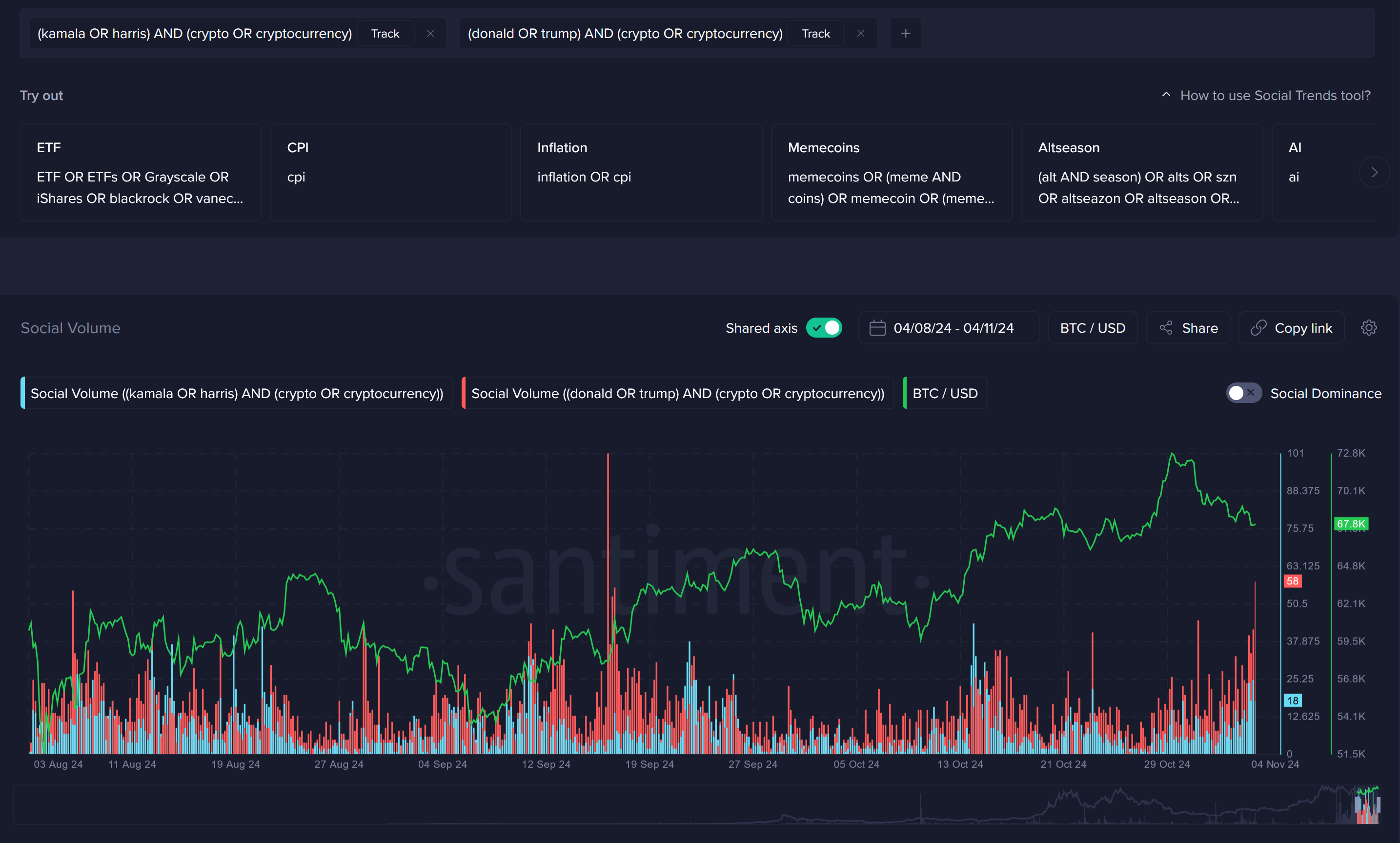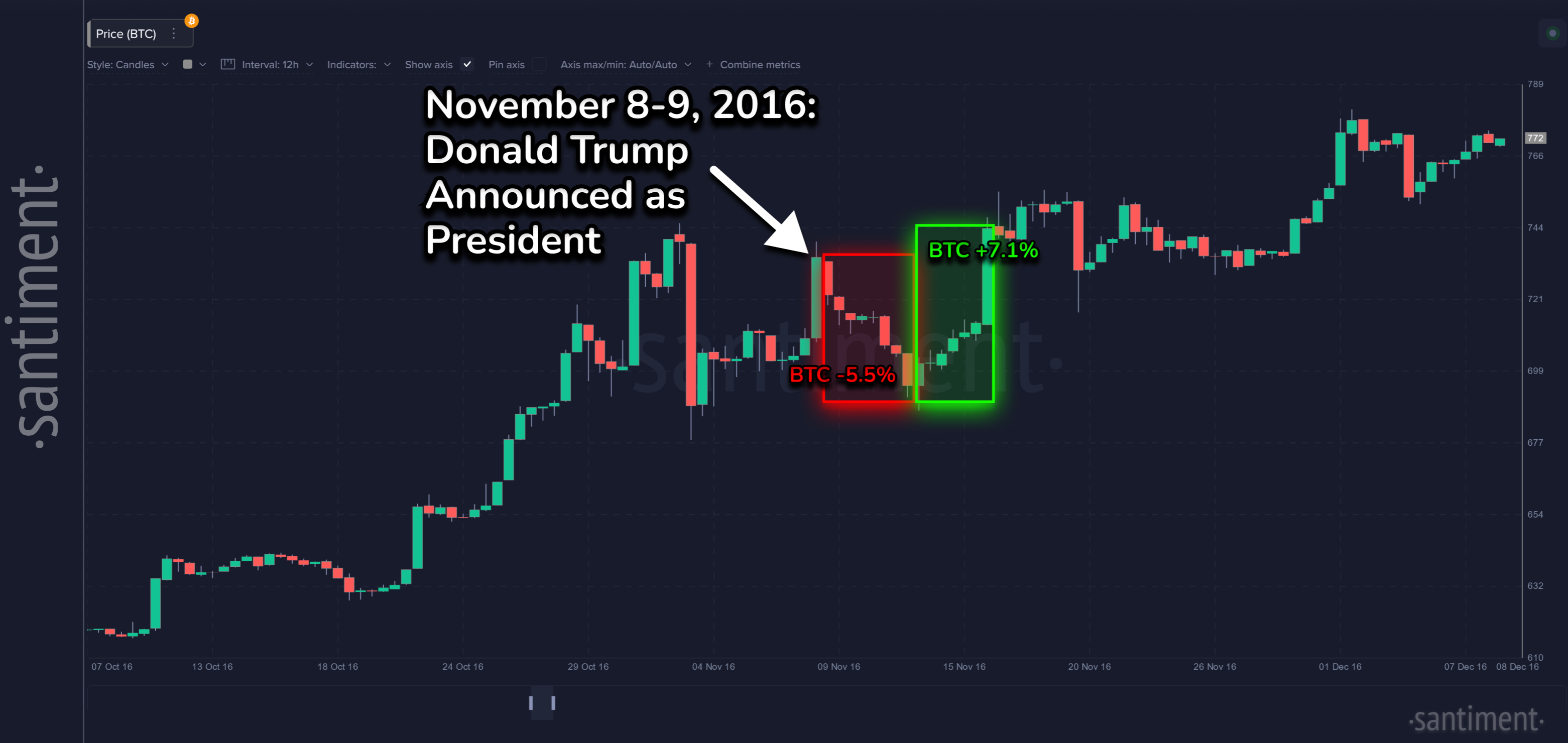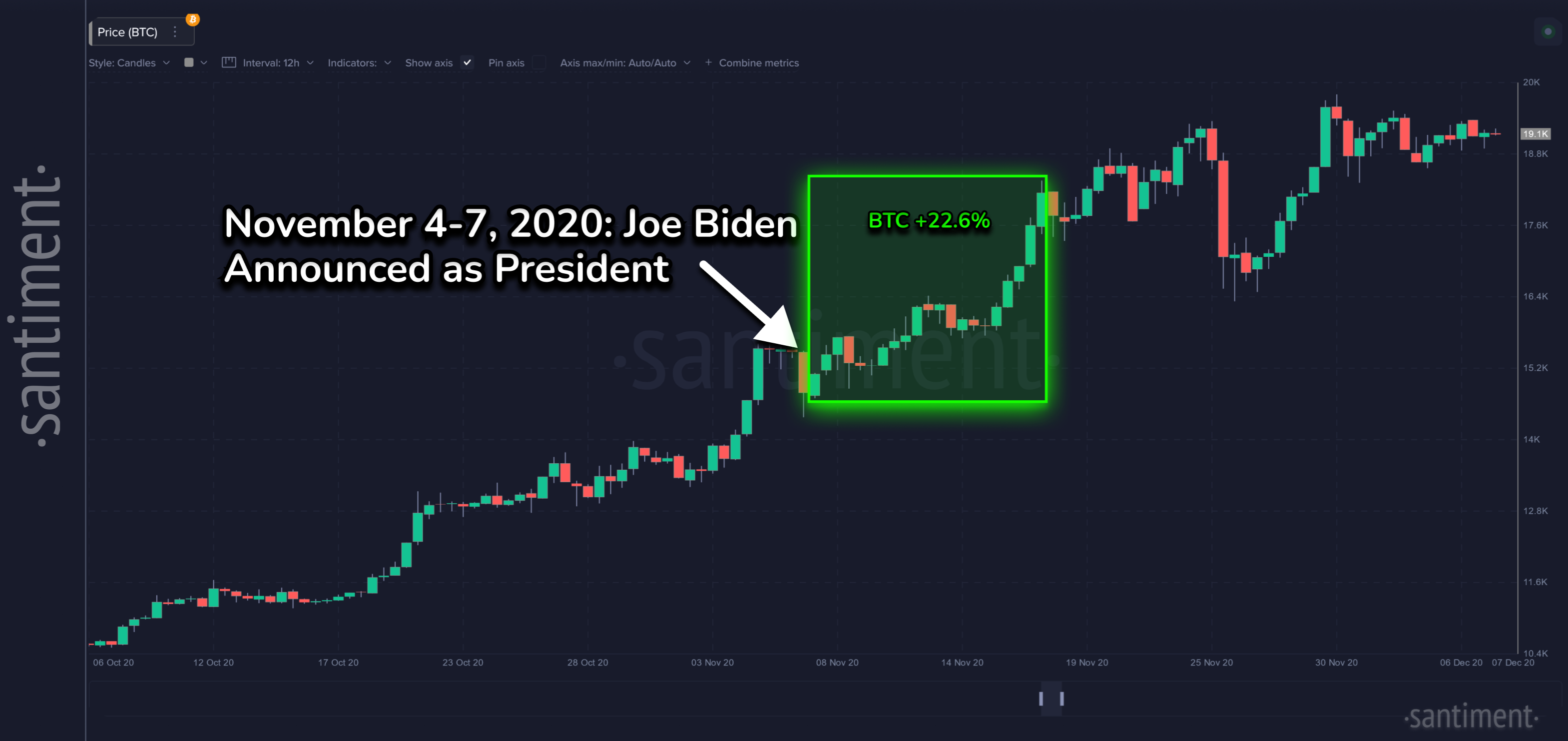- The US presidential election may have a significant impact on the crypto markets due to the influence of the country’s political decisions, policies, and economic approaches.
- The data shows that cryptocurrencies perceived Trump’s proposals to be somewhat more specific and broader than Harris’s.
- Traders should be careful as cryptocurrency markets are very sensitive to political uncertainty and often display volatility during election cycles.
The US presidential election is one of the most momentous events in the world. Due to the influence of the country’s political decisions, policies and economic approaches, this can have a significant impact on the crypto and global markets.
While the race promises to be tight, the crypto community perceives Trump’s proposals as more specific and broader than those of Harris. However, traders should remain cautious as cryptocurrency markets are highly sensitive to political uncertainty and often experience increased volatility during election cycles.
Donald Trump’s outlook for the crypto market
Let’s take a look at how Donald Trump, the first candidate, could influence the cryptocurrency market. Crypto traders have a notable pro-Trump bias, likely driven by his publicly stated intentions to adopt pro-crypto policies.
At the Bitcoin conference in Nashville on July 27, Trump proposed creating a strategic national stockpile of Bitcoin to position the United States as a leader in cryptocurrency adoption and announced plans to create a council Presidential Advisory on Bitcoin and Crypto for clearer regulatory guidance.
He also expressed his intention to impeach the current Chairman of the United States Securities and Exchange Commission (SEC), Gary Gensler, criticizing the current administration’s regulatory stance on crypto.
Additionally, in September, Trump’s sons Donald Trump Jr. and Eric Trump launched World Liberty Financial (WLFI), a cryptocurrency exchange, signaling the family’s growing involvement in the industry.
Kamala Harris’ Outlook for the Crypto Market
Regarding the second candidate in the US presidential race, Vice President Kamala Harris also made several statements showing her support for the cryptocurrency industry. However, she has not been as explicit as Trump.
In August, Harris recognized the potential of blockchain across various sectors, emphasizing the need for balanced regulation that promotes innovation while ensuring consumer protection.
On September 22, at a fundraiser at Cipriani Wall Street in Manhattan, Harris expressed her intention to encourage innovative technologies like AI and digital assets while protecting consumers and investors.
In October, it revealed plans to establish a regulatory framework for cryptocurrencies and digital assets to protect investors. Throughout her campaign, she spoke with crypto industry leaders to discuss the future of digital assets, signaling her desire to integrate crypto innovations into her policy agenda.
Although both candidates supported the crypto industry, the crypto public perceived Trump’s proposals to be a bit more specific and broad. Harris’ statements indicate a favorable stance but with an emphasis on consumer protection and regulatory frameworks.
According to Santiment data, the chart below shows the crowd’s perceptions of these two candidates. It shows higher mentions of Trump’s crypto discussions and policies than Harris.

Social volume graph. Source: Santiment
Historical crypto performance in previous US elections
Let’s take a look at how the crypto market overall reacted during the previous US presidential elections.
On November 8, 2016, Bitcoin experienced a slight five-day retracement of 5.5% following Trump’s victory. This period was full of many unknowns about what the former Celebrity Apprentice host would actually do as President of the United States. However, Bitcoin and altcoins quickly recovered after the initial decline.

Bitcoin chart during the 2016 US presidential elections. Source: Santiment
However, the November 4, 2020 election was much more positive for the crypto market after Joe Biden’s victory was announced, with Bitcoin rising over 22% in 11 days after the results were announced. However, this was only eight months after global COVID-19 lockdowns began.
Many would argue that this upward race was inevitable and would have happened regardless of who was elected president or even if there had been no election. The recovery was primarily fueled by falling interest rates and direct rounds of stimulus checks received by U.S. households due to COVID-19-related shutdowns.

Bitcoin chart during the 2020 US presidential elections. Source: Santiment
As mentioned above, the two most recent elections lack sufficient data and samples to draw reliable conclusions about cryptocurrency performance. In 2016 and 2020, markets experienced a bullish surge immediately or within a week of the new president’s announcement.
Despite the limited data, a clear trend emerges: cryptocurrency markets are highly sensitive to political uncertainty and often display volatility during election cycles. Traders react to policy changes, regulatory developments and candidate speeches.
As the final election results are confirmed, crypto markets will likely experience significant price movements based on perceived support or restrictions. The outcome of this election will be crucial for the crypto community as investors closely monitor the new administration’s stance on digital assets.
FAQ Bitcoin, altcoins and stablecoins
Bitcoin is the largest cryptocurrency by market capitalization, a virtual currency designed to serve as currency. This payment method cannot be controlled by any person, group or entity, eliminating the need for third party participation during financial transactions.
Altcoins are any cryptocurrency except Bitcoin, but some also consider Ethereum to be a non-altcoin because it is from these two cryptocurrencies that the fork occurs. If this is true, then Litecoin is the first altcoin, derived from the Bitcoin protocol and, therefore, an “enhanced” version of it.
Stablecoins are cryptocurrencies designed to have a stable price, with their value backed by a reserve of the asset they represent. To achieve this, the value of a stablecoin is linked to a commodity or financial instrument, such as the United States dollar (USD), whose supply is regulated by an algorithm or demand. The main purpose of stablecoins is to provide an on-ramp for investors willing to trade and invest in cryptocurrencies. Stablecoins also allow investors to store value since cryptocurrencies, in general, are prone to volatility.
Bitcoin dominance is the ratio of the market capitalization of Bitcoin to the total market capitalization of all cryptocurrencies combined. This gives a clear picture of the interest in Bitcoin among investors. Strong BTC dominance typically occurs before and during a bull run, during which investors resort to investing in relatively stable, high market cap cryptocurrencies like Bitcoin. A decline in BTC dominance usually means investors are moving their capital and/or profits into altcoins in search of higher returns, which usually triggers an explosion in altcoin rallies.

